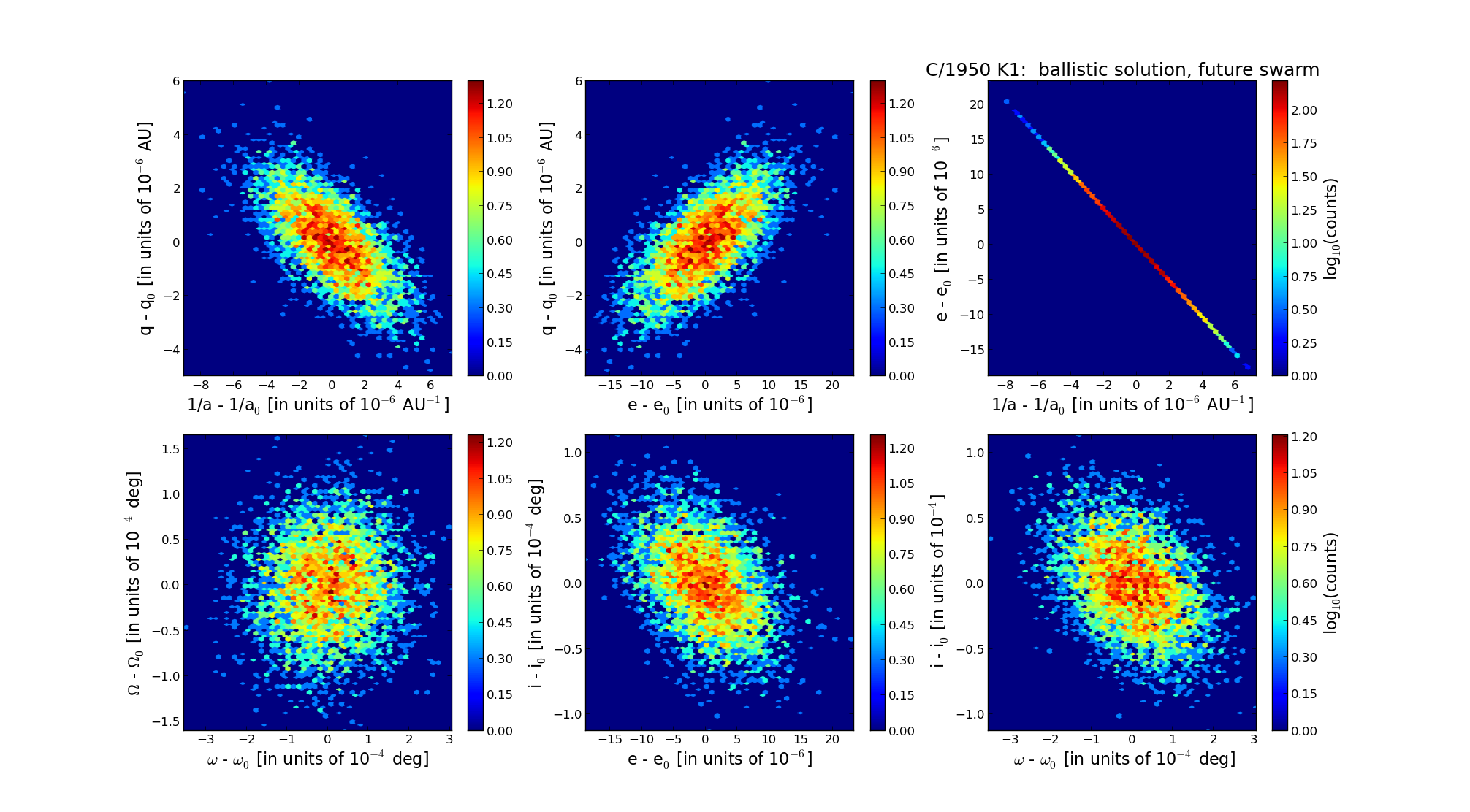C/1950 K1 Minkowski
more info
Comet C/1950 K1 was discovered on 19 May 1950 by Rudolf L.B. Minkowski (Palomar Observatory, California, USA). At the moment of discovery, the comet was almost 9 months before perihelion passage and it was last seen on 19 January 1953. [Kronk, Cometography: Volume 4].
This comet made its closest approach to the Earth on 23 March 1951 (1.774 au), that is over two months after perihelion passage.
Solution given here is based on data spanning over 2.652 yr in a range of heliocentric distances from 3.531 au through perihelion (2.572 au) to 7.258 au.
This Oort spike comet suffers small planetary perturbations during its passage through the planetary system that cause a bit tighter future orbit (see original and future barycentric orbits).
More details in Królikowska et al. 2014.
This comet made its closest approach to the Earth on 23 March 1951 (1.774 au), that is over two months after perihelion passage.
Solution given here is based on data spanning over 2.652 yr in a range of heliocentric distances from 3.531 au through perihelion (2.572 au) to 7.258 au.
This Oort spike comet suffers small planetary perturbations during its passage through the planetary system that cause a bit tighter future orbit (see original and future barycentric orbits).
More details in Królikowska et al. 2014.
| solution description | ||
|---|---|---|
| number of observations | 254 | |
| data interval | 1950 05 27 – 1953 01 19 | |
| data type | perihelion within the observation arc (FULL) | |
| data arc selection | entire data set (STD) | |
| range of heliocentric distances | 3.53 au – 2.57 au (perihelion) – 7.26 au | |
| detectability of NG effects in the comet's motion | NG effects not determinable | |
| type of model of motion | GR - gravitational orbit | |
| data weighting | YES | |
| number of residuals | 466 | |
| RMS [arcseconds] | 1.28 | |
| orbit quality class | 1a | |
| orbital elements (barycentric ecliptic J2000) | ||
|---|---|---|
| Epoch | 2255 03 21 | |
| perihelion date | 1951 01 14.57247147 | ± 0.00039626 |
| perihelion distance [au] | 2.57371784 | ± 0.00000139 |
| eccentricity | 0.99928354 | ± 0.00000561 |
| argument of perihelion [°] | 192.416020 | ± 0.000093 |
| ascending node [°] | 38.885979 | ± 0.000048 |
| inclination [°] | 144.138428 | ± 0.000031 |
| reciprocal semi-major axis [10-6 au-1] | 278.37 | ± 2.18 |
| file containing 5001 VCs swarm |
|---|
| 1950k1a5.bpl |

